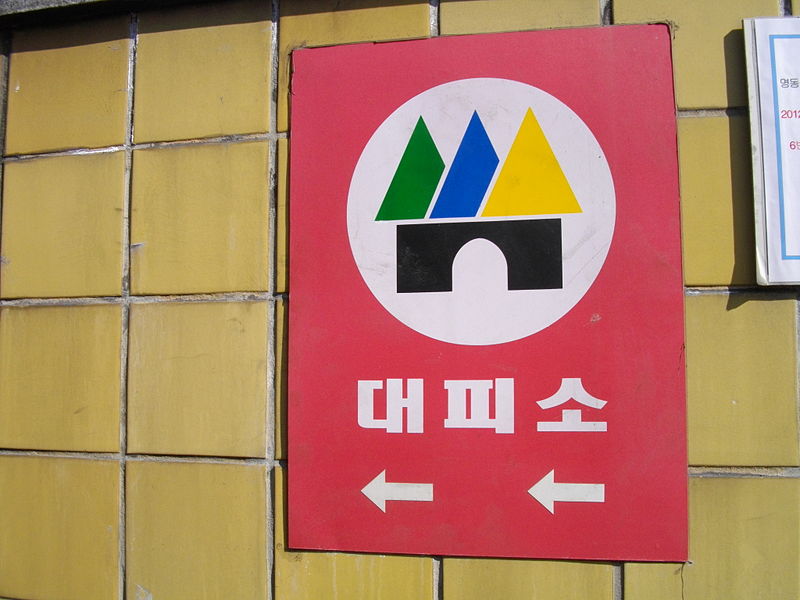
In Case You Are Curious: S Korea's Wartime Plan for Citizens
It’s pretty safe to say that most South Koreans seem unfazed by news of North Korean threats, which are bombarding the headlines these days. (Excuse the pun.) Most South Koreans are getting on with their lives as usual. People flocked outside over the weekend to enjoy the fine weather and spring blossoms. I was at a night market along the Han River Saturday evening and the queues to buy food were long to say the least.
To be sure, there is some concern behind the scene. Yonhap News reported that sales of gold bars have jumped significantly since early April, attributing the leap to rich customers in their fifties and sixties. On Apr. 17, Japan’s National Diet discussed plans to address an influx of refugees in case of “an emergency on the Korean Peninsula.” On Naver, one of South Korea’s largest search engines, I found someone who was recently asking “questions regarding how to flee in case of war.”
The Ministry of Public Safety and Security actually offers detailed guidelines on what to do in case of war. Titled “Action Plan in Case of National Security Threat,” the document is divided into three sections: “Before Outbreak of War,” “After Outbreak of War” and “In Case of Terror.” The guidelines are easily accessible on the ministry’s website. Here are some notable points:
1. Where to hide
Before war breaks out, locating the closest emergency shelter is the best thing anyone can do. (You can find them by using the ministry’s smartphone application Anjeon Didimi — “Steppingstones to Safety.”) Most subway stations are designed to function as underground bunkers, but government structures and many big office buildings are also listed on the app as potential places of refuge.
A public service announcement from the Ministry of Public Safety and Security on how to locate an emergency shelter using the Anjeon Didimi app.
2. Shopping list
It also wouldn’t hurt to learn how to use gas masks (and of course buy them in advance for safe keeping at home), and to stock up on food and water and medical supplies and make copies of important documents. (“Do not hoard basic necessities” after war starts, the Ministry guidelines warn.)
3. If war happens
Instructions are more complex in case of actual war. “Monitor government announcements on TV and radio from home,” and “avoid making unnecessary phone calls so as to avoid overburdening the telecommunication network” are two big ones. Anyone who is called on to assist with the war effort should respond without hesitation.
There is no mention of how to leave the country if you are thinking about emergency evacuation. (For that, foreigners would be better off consulting their respective embassies.)
Of course, most people don’t want to see war on the Korean Peninsula. It would mean untold destruction and loss of life. Still, it’s never a bad idea to be prepared.
Tensions are running high on the Korean Peninsula. On Saturday North Korea celebrated its late founder Kim Il-sung’s birthday. A military parade took place in the center of Pyongyang, with many foreign observers glued to the TV screen for any indication that the North may be planning military moves.
While the widely expected nuclear experiment did not take place over the weekend, North Korea launched a missile which failed shortly after takeoff. U.S. vice president Mike Pence arrived in Seoul on Sunday to reiterate his government’s military commitment to South Korea. The U.S. aircraft carrier Carl Vinson and other American warships are expected to reach Korea’s East Sea in about a week’s time.
It’s a crazy time we are living in.
Cover Image: “Korean Shelter Sign” (Source: Wikipedia Commons)

